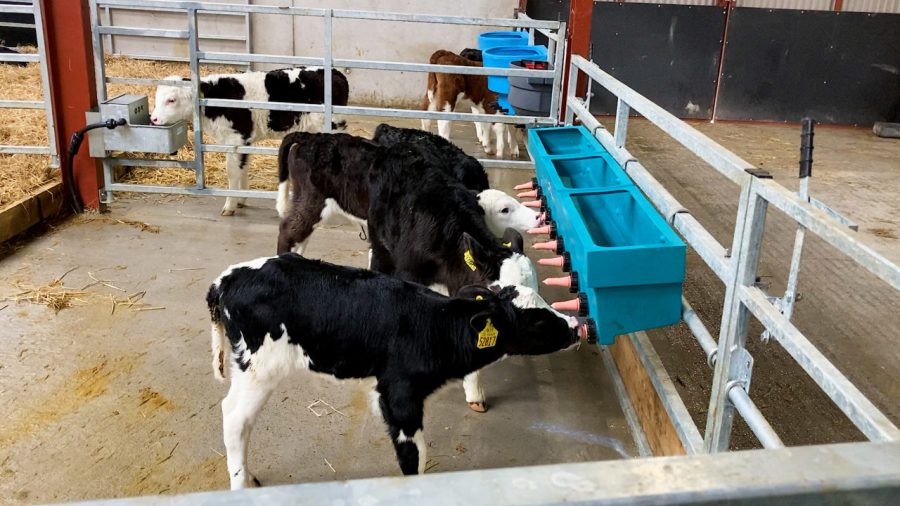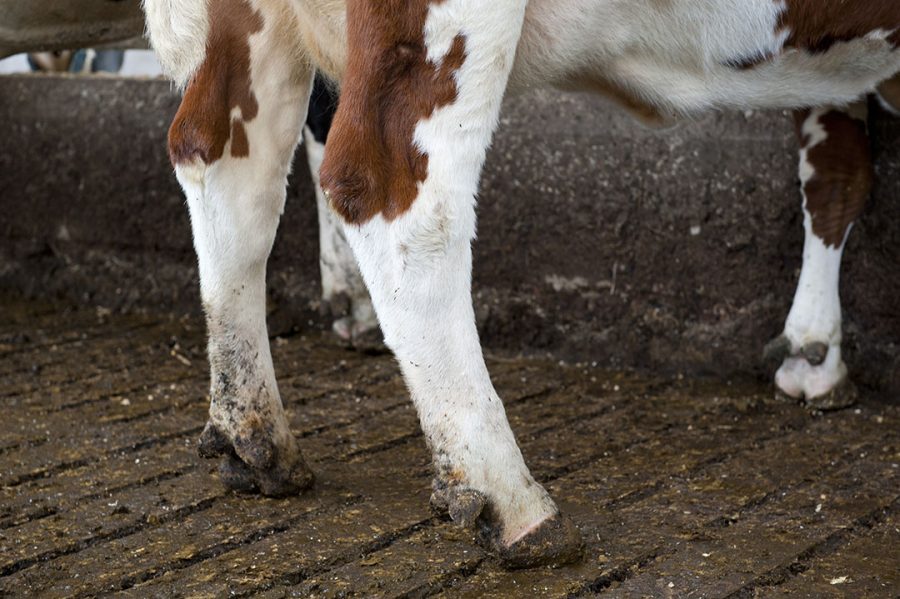Discover how to tailor the perfect calf feeding concept for your farm’s future. Learn key strategies for optimal calf rearing and boost your farm’s profitability.

Calf rearing isn’t just routine—it’s the foundation for a thriving future. The calves we nurture today will be our dairy cows in two years, promising a future of high-yielding, healthy cows. This potential for future success should inspire and motivate you to invest in every aspect of calf rearing. The saying, ‘”the calf is the cow of tomorrow,'” rings true: the care you provide now paves the way for robust calf growth and future high-yielding dairy cows. So, what’s the secret? It’s about finding the right approach for your farm’s unique needs and sticking to it diligently. There’s no one-size-fits-all; the key is tailoring a system that aligns with your farm’s demands. Our article dives into various calf-rearing concepts, highlighting the importance of customized strategies to ensure robust calf growth and future high-yielding dairy cows.
Measuring Farm Success: Average Production Per Day of Life
One way to gauge farm profitability is by looking at the average production per day of life. This metric is closely tied to calf rearing and reflects the farm’s success. To maximize this, focus on factors like age at first calving, production capability, and longevity.
Age at First Calving marks the transition from calf to productive cow. Aim for first calving around 24 months, combining early productivity with good health without rushing the process.
Production Capability: High production comes from well-reared calves. Vigorous, fast-growing calves are more likely to be high-producing cows. Focus on good nutrition, building immunity, and managing stress.
Longevity: Longer productive lives reduce replacement costs and boost farm profitability. Aim for calves that grow fast but are resilient, staying healthy through multiple lactation cycles.
In essence, optimal calf rearing lays a strong foundation for future success. Clear goals like vigorous and fast growth contribute to long-term productivity. Achieving these goals involves balanced nutrition, timely medical care, and effective management. Align these elements for better average production per day of life, reflecting farm profitability.
Exploring Diverse Feeding Concepts: Personalizing Your Calf Rearing Strategy
In calf rearing, you have various approaches, each offering unique benefits. Here, we’ll explore two feeding methods for the first six months: the Hokovit Super Heifer Method by Hofmann Nutrition AG and the Sano rearing concept from Sano Agricultural Institute. Both are backed by extensive research and practical use.
Notably, there needs to be more than one-size-fits-all solution. The key is finding the method that fits your farm’s needs. You can raise healthy, productive cows by choosing and rigorously applying the right strategy. Success in calf rearing is not just about following a set of rules, but about personalization and dedication—discover what suits your farm and commit to it.
Prioritizing Health: The Key to the Hokovit Super Heifer Method
At the heart of the Hokovit Super Heifer Method is a focus on robust calf health from the start. It begins with colostrum feeding, a critical step done as quickly as possible. Recognizing that many high-producing cows may not have optimal colostrum, the Hokovit system includes Calvicol supplementation to enhance quality. Additionally, Hokostar—a vitamin blend that ensures rapid efficacy—boosts immunity and vigor, which are essential in the early phase of life.
The method includes:
- A structured nine-week milk feeding program.
- Targeting up to six liters per day per calf.
- About 30 kg.
This balanced feeding promotes healthy growth without over-reliance on milk.
For solid feed, calves are introduced to a concentrate feed formulated with Hokovit’s unique recipe, including the Calvistart micronutrient complex. This optimizes the gut microbiome, enhancing growth rate, feed efficiency, and overall health. Hay is offered free choice alongside the concentrate up to six months of age. Mixing these with molasses into a dry Total Mixed Ratio (TMR) is practical. Each calf typically consumes around 480 kg of concentrate and 200 kg of hay in this period.
The results of the Hokovit Super Heifer Method are impressive: even with limited milk, calves usually reach an average live weight of 230 kg by six months. This underscores the effectiveness of the method in fostering vigorous, fast-growing calves that are key to profitable dairy operations. These results should give you confidence in the method’s ability to deliver on its promises.
Innovations in Calf Rearing: Insights from the Sano Agricultural Institute
At the Sano Agricultural Institute in Hungary, an efficient calf-rearing method starts with early colostrum feeding. Each calf gets its first colostrum within 2 hours of birth, supplemented with Cotosan Plus®. Aim to feed around 10-12% of the calf’s body weight. Dr. Norbert Göres highlights the importance of testing colostrum quality with a refractometer to build a robust immune system early on, which is crucial for healthy growth.
Next, calves follow a restrictive milk feeding plan, receiving up to 12 liters per day or opting for ad libitum feeding within the first three weeks—each meal capped at 4 liters to ensure proper digestion. The milk feeding period extends to 14 weeks to support rumen development, using only Sanolac Startino® with 50% skim milk powder for high-quality nutrition.
In the second week, robotic feeders will be used in group housing. Regularly check and calibrate these feeders to guarantee accurate and consistent nutrition according to whether the powder quantity is set per liter of feed or water.
The Power of Dry TMR: Balancing Nutrition and Promoting Rumen Health
A dry Total Mixed Ration (TMR) used during the milk and weaning phases offers numerous benefits. It ensures balanced nutrition, consistent growth, and optimal rumen development. A well-mixed dry TMR encourages uniform consumption, helping to avoid dietary imbalances caused by selective eating.
Here are practical tips for preparing a dry TMR to avoid selection and support rumen development:
- Initial Mixing: Mix chopped hay with molasses to coat it and make it less likely for calves to pick out preferred particles.
- Pause and Add Ingredients: After the initial mix, pause briefly before adding other dry ingredients. This ensures that the hay is well-coated.
- Intensive Mixing: Mix at high RPM to achieve a uniform blend without over-mixing, which preserves the molasses’ sticky effect.
- Monitoring: Regularly check the mix for consistency and adjust to maintain palatability and effectiveness.
These steps will help you create a palatable dry TMR that meets your calves’ nutritional needs and supports a smooth weaning transition.
Streamlining Dairy Farm Management: The Efficiency and Ease of BoviSync
BoviSync is a powerful platform built to simplify dairy farm operations while gathering and evaluating essential data. The BoviSync Mobile App enhances farm efficiency by standardizing tasks, ensuring each job is done consistently and accurately. This streamlines daily activities and dramatically aids in training new employees, easing their transition into the farm’s workflow.
Standardized procedures mean everyone follows the same steps, ensuring uniform animal care and operational efficiency. The app documents critical events and actions like administering colostrum, monitoring calf health, and tracking growth, ensuring all necessary data is easily accessible for analysis.
For new employees, BoviSync is a game-changer. The step-by-step guidance helps newcomers quickly learn and follow established protocols, minimizing the learning curve. This ensures everyone, new or experienced, works in harmony, boosting overall productivity and animal health on the farm.
BoviSync: Revolutionizing Farm Operations with Precision and Insight
BoviSync isn’t just about collecting data; it’s a game changer for your farm. By documenting every detail through its intuitive app, BoviSync helps you spot inefficiencies and improve operations. Imagine uncovering trends and inconsistencies that you might miss otherwise.
Take this example: Calves repeatedly falling ill were traced back to colostrum administered by a specific employee. With BoviSync’s data collection, farm management could refine their colostrum protocols, ensuring better calf health.
This shows how targeted data analysis can significantly boost farm performance, quickly address issues, and enhance productivity and calf health.
The Bottom Line
Success in dairy farming starts with effective calf rearing. Tailored feeding strategies and advanced management systems are essential to raising solid, fast-growing calves that become productive, long-lived cows. Remember, there’s no one-size-fits-all solution; each farm has unique requirements. Explore different feeding methods and tools to find what works best for you. You’ll set up your farm for future success with dedication and suitable systems.
Key Takeaways:
- Foundation of Future Cows: Proper calf rearing sets the stage for producing healthier, higher-yielding cows.
- Average Production Per Day of Life: This is a crucial parameter for farm profitability, influenced by factors like age at first calving, production capability, and longevity.
- Optimal Rearing Goals: Aim for vigorous and fast-growing calves to ensure they develop into productive cows.
- Personalized Feeding Concepts: No single method fits all; find a feeding strategy that aligns with your farm’s unique needs.
- Early Colostrum Feeding: Ensure calves receive high-quality colostrum immediately after birth to build strong immunity.
- Nutrition and Micronutrients: Use a balanced mix of milk replacers, concentrate feeds, and micronutrients to promote health and growth.
- Importance of Milk Feeding Phases: Structured milk feeding programs are essential; consider extending this phase for optimal rumen development.
- Innovative Management Systems: Utilize management tools like BoviSync to streamline operations and standardize procedures on the farm.












